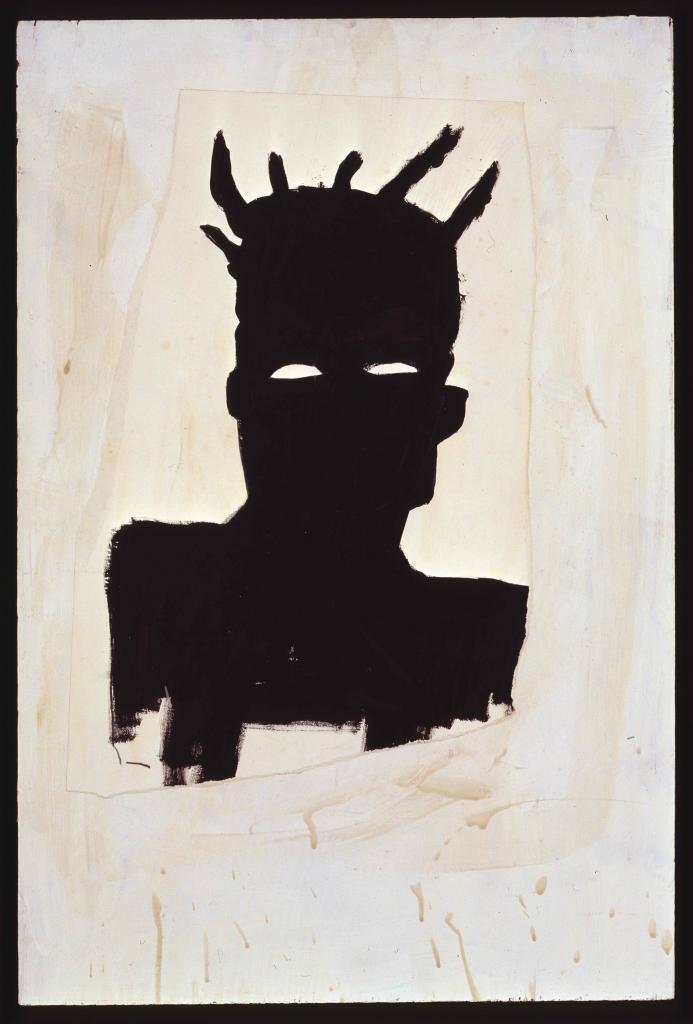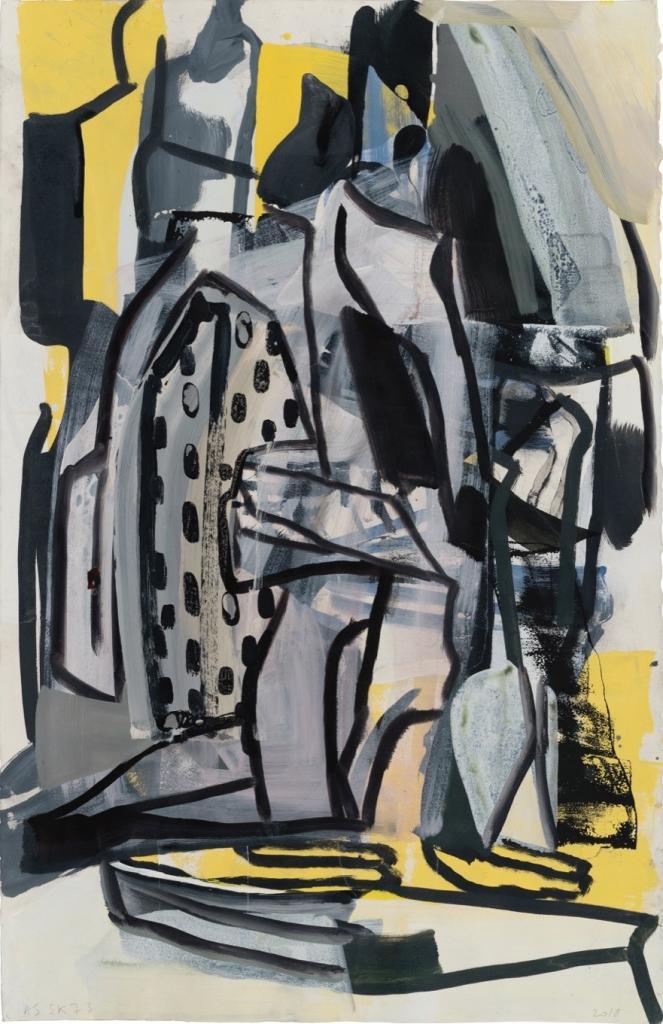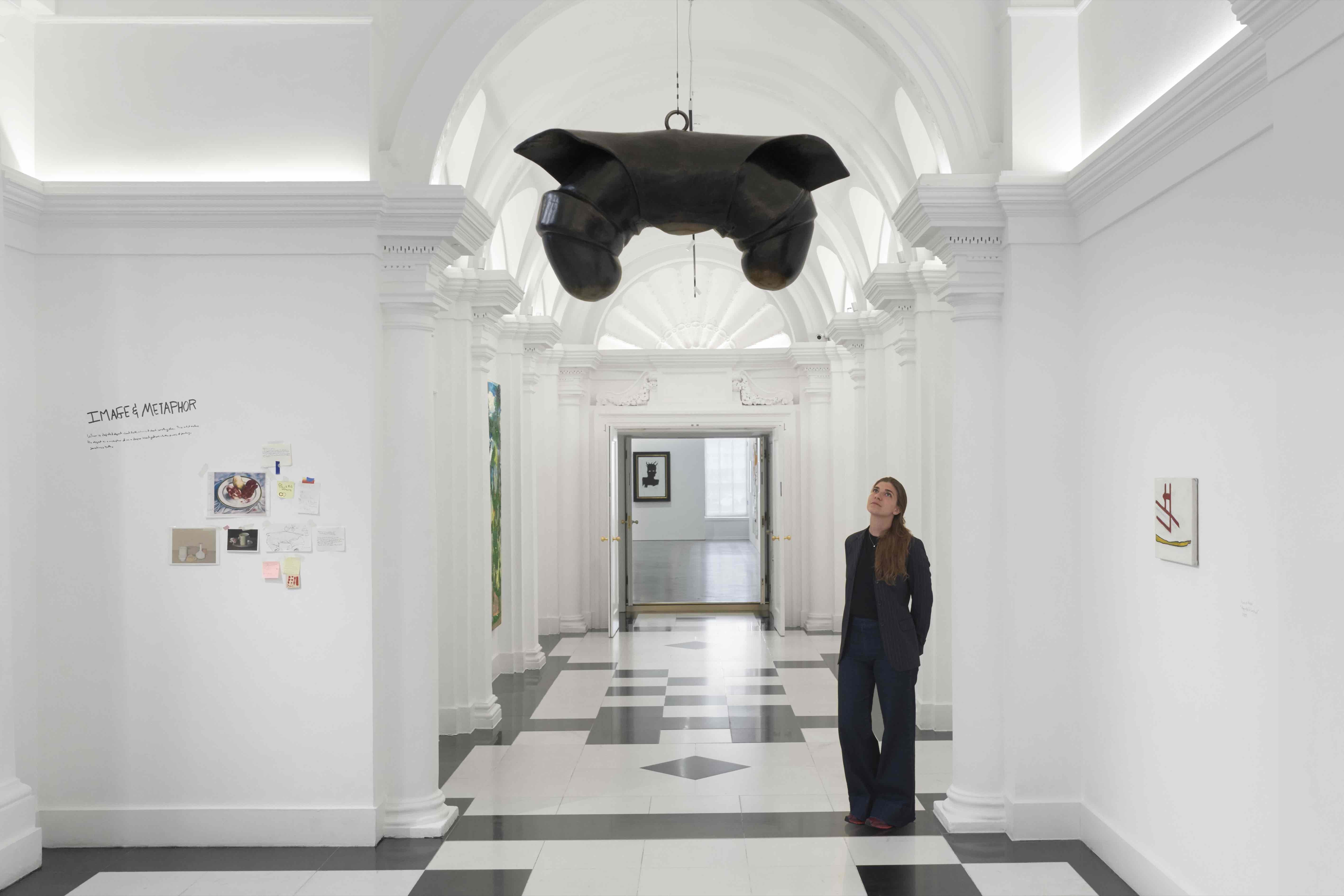Artists I steal from, or how artist Alvaro Barrington converses with artists that inspire(d) him
05/06/2019 - 09/08/2019Born in Caracas, Venezuela in 1983, Alvaro Barrington spent the first eight years of his childhood living with his grandmother in Grenada. Graduating with a BFA from Hunter College in New York before completing an MA at the Slade School of Fine Art in London, Barrington was invited to hold his first solo museum exhibition at MoMA PS1 in 2017. The following year, Galerie Thaddaeus Ropac London presented his solo show, A Taste of Chocolate, curated by Norman Rosenthal. Barrington lives and works in New York. Drawing on his formative experiences, he uses materials and techniques that connect to his personal and cultural history, such as the burlap fabric used to carry cacao beans and sewn yarn that references his Grenadian aunts’ sewing. His family and others close to him inform his practice as much as the subject matter of hibiscus flowers and other vegetation inspired by the Caribbean that populate his richly textural paintings.

Copyright the artists, courtesy Galerie Thaddaeus Ropac, London • Paris • Salzburg
Photo: Ben Westoby
Etel Adnan, Emma Amos, Janine Antoni, Amelia Barratt, Alvaro Barrington, Georg Baselitz, Jean-Michel Basquiat, Joseph Beuys, Louise Bourgeois, Joe Bradley, Lisa Brice, Derrick Alexis Coard, Robert Colescott, Thornton Dial, Louise Fishman, Gerasimos Floratos, Denzil Forrester, Katharina Grosse, Philip Guston, Charline von Heyl, Howard Hodgkin, Allison Katz, Ellsworth Kelly, Raoul de Keyser, Willem de Kooning, Jacob Lawrence, Agnes Martin, Chris Martin, Todd McFarlane, Archibald J. Motley Jr., Elizabeth Murray, Laura Owens, Elizabeth Peyton, André Pierre, Simonette Quamina, Robert Rauschenberg, Robert Ryman, Paul Mpagi Sepuya, Trevor Shimizu, Malick Sidibé, Amy Sillman, Mary T. Smith, Henry Taylor, Bob Thompson, Cy Twombly, Nari Ward, Andy Warhol, Issy Wood and Purvis Young.

Unc you the plug, 2019 Mixed media on burlap 182.9 x 167.6 cm (72 x 66 in) (ABA 1153)
Courtesy the artist
Artists I Steal From is an exhibition about looking at art through the eyes of an artist. Artists have always borrowed from one another; however, few are as candid about their sources – about who they steal from and why – as the artist Alvaro Barrington (b. 1983, Caracas, Venezuela). Artists I Steal From brings together works by 49 artists, some of whom have never been shown in the UK before, some who are considered to be among the greatest artists of our time. All have directly influenced the way Barrington creates, thinks and sees, and all have perfected techniques or solutions that he has been inspired to ‘steal’.
“Artists always look at how other artists have solved the problems they are wrestling with, or have achieved the results they aspire to. The artists in this exhibition are those I look to, and steal from. It’s the particular inventiveness of their practice that fascinates me, since it has opened up a whole world for me and introduced me to new possibilities within my own painting.” Alvaro Barrington
“It’s an incredible window on the world, to see through the eyes of an artist. Artists are able to find the truth in things that are not immediately apparent, which is why one is inspired, informed and reconnected to oneself when looking at a great work of art. With this exhibition, Barrington lays bare his thinking: what he’s looking at, as well as what informs and educates him, which is usually a private process.” Julia Peyton-Jones
In revealing his sources, Barrington renders us uniquely privy to his inner thought processes. With works dating from the early twentieth century to those conceived especially for the show, Barrington isolates and highlights specific concerns or visual tools from the myriad elements that shape each artists’ practice, unpicking the logic through which they are working, and pinpointing the unique, at times surprising ways in which they have informed or inspired his thinking. This allows us to (re-)connect with the artists and works on display, and to look at the world in a different way.

Copyright the artists, courtesy Galerie Thaddaeus Ropac, London • Paris • Salzburg
Photo: Ben Westoby
Barrington considers ‘the line’ through artists such as Cy Twombly and Philip Guston, highlighting their power to conceal or reveal, to retain a balance between image and process, to treat the surface as a space for the act of making – whether through Guston-esque ‘heavy black outlines and a flurry of gesture and paint scraps’, or the delicate pencil dance of Twombly: “He always knows the exact distance to leave between one set of marks and another, which requires incredible restraint. If his canvas or paper were a movie, he would know exactly when silence should lead to a loud bang.” He also explores how Amelia Barratt’s slow looking and refined mark-making “drew signs that led to other signs so that her work became about ideas as connective tissue”.

Copyright the artists, courtesy Galerie Thaddaeus Ropac, London • Paris • Salzburg
Photo: Ben Westoby
When working with colour, Barrington draws on Howard Hodgkin’s use of pigment to evoke a specific mood or time of day, born from the slow and considered application of paint. He addresses how Robert Ryman’s White Paintings,
“are never truly about white; they’re about everything else: smoothness, gesture, surface tension, colour balance. They become a place for looking, because once you establish the familiar or the constant (white), you can then think about other formal aspects … Now, when I paint a red, blue or white, I always think about what else that colour can do.”
Barrington also talks about the concept of ‘energy’ in an artist’s work. Whether it’s through colour – highlighting Katharina Grosse’s ability to translate an active energy into something physical and unconstrained – or through material. In Thornton Dial, Barrington “saw a master, allowing materials to have their own energy and possibilities … it was at that moment I knew I had to be in conversation with every material I used.”
Formally, Barrington is inspired by the way in which the performances and sculpture of Janine Antoni elaborate a radical claiming of space, while the grid-like forms in the paintings of Louise Fishman refer to their ordering basis – an internal logic directly related to the physical application of paint itself.
Each of these artists’ methods of making has in some way directly influenced Barrington’s own – an awareness of materials, a liberation in terms of how to use them, and a sense of freedom in his work’s presentation.
“The exhibition is a conversation that I’m having with other artists, that the viewer can see … the installation is taking my notebooks and expanding them to encompass the whole gallery, taking their intimacy and blowing it up to fit this huge space.”Alvaro Barrington
Beyond borrowing from and exploring the specific techniques of these artists, Barrington’s logic in bringing their works together also reveals the personal connections he sees between them, and the associations that have helped him find his path as a painter.
“I had to marry painting with the visual history that I grew up with. It opened up a whole world for me and introduced me to new possibilities in painting that was more like home.” The American South, for example, “became one of those gateways that made me feel comfortable in making art. It made me feel like I had space there.”
Robert Rauschenberg made most of his work in the Deep South, in Florida, its landscape spacious in contrast to the built-up claustrophobia of Andy Warhol’s New York. Mary T. Smith was born a few miles away from where Rauschenberg would later work – in early twentieth century Mississippi; Jean-Michel Basquiat’s Bayou and jazz paintings find their home in Louisiana. Each of these artists used similar tools to explore different concerns with spatiality. “In the South, there is space: folks have front and back yards, unlike enclosed New York apartments. In Rauschenberg’s work, he was always coming off the wall, whereas other formalist artists were trying to get as close to flatness, as close to the wall as possible.”

Untitled (living room with Mama), 2004 Acrylic on canvas
67.3 x 77.5 cm (26.5 x 30.5 in)
(HTA 1000)
Private Collection
© Henry Taylor
A number of artists not shown in the exhibition but from whom Barrington steals are represented by his studio library of over 300 books, as well as in the form of found and modified postcards on which he draws, sews and notates so that they become entirely his own. This serves to merge the space between Barrington’s artwork and his studio, further elaborating on the private processes behind his practice and those of others.
“My studio has an honesty in looking and being. I can be myself there. I walk around and I’m free to explore. When I look at another artist’s work, I approach it not in terms of what I want it to do, but in terms of what the artist has done within their own context and history, which helps me to think more deeply about what art is. Art is always part of our cultural moment, and listening to one another helps in a big way.” Alvaro Barrington














